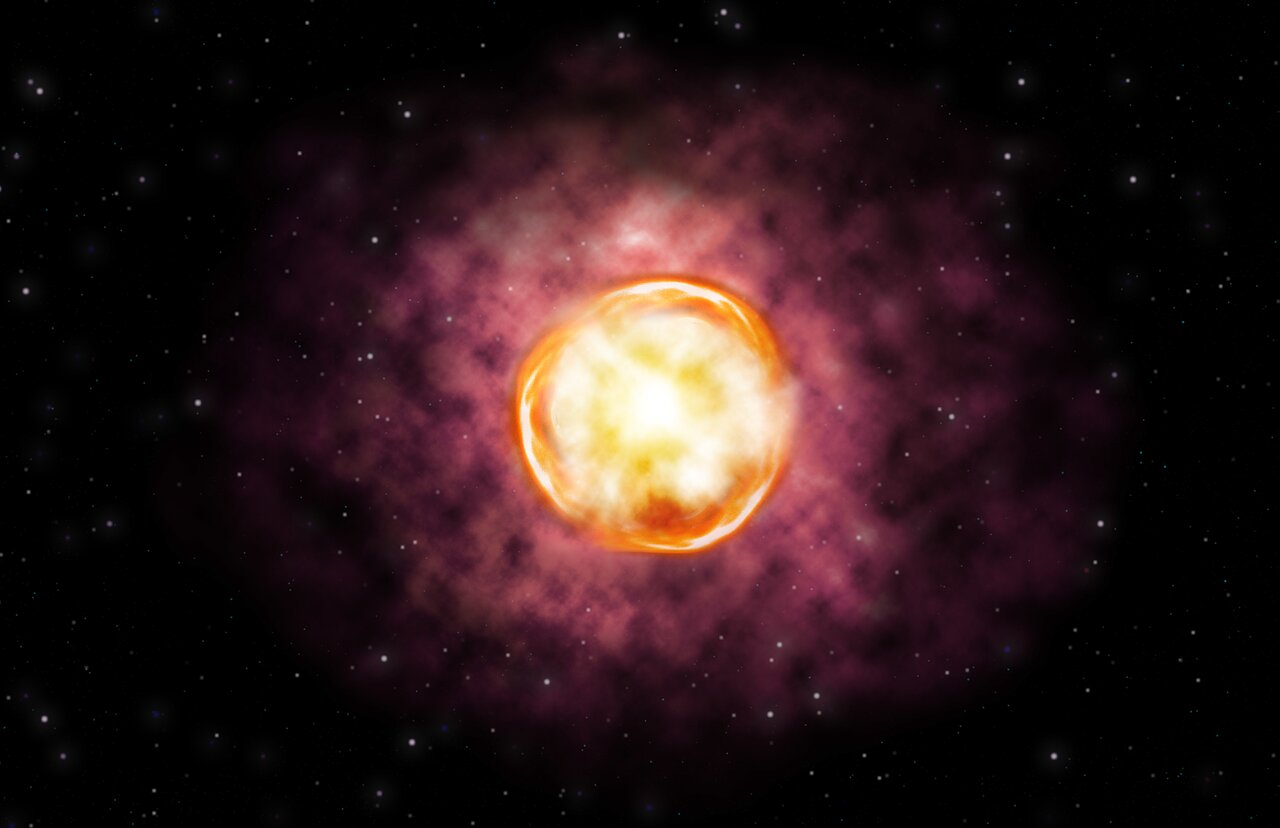
Tracking transients with Rubin
A key part of the Vera C. Rubin Observatory’s mission is to spot everything in the sky that changes
Profile
Name:
-
Vera C. Rubin Observatory
Location:
-
Cerro Pachón
First light:
-
Mid-decade
Telescope properties:
-
Three-mirror anastigmat reflector with 8.4m primary, f/1.23
Operational waveband:
-
320-1060nm
Altitude:
-
2662m (8737ft)
Science goals:
- To provide a statistical study of dark matter and dark energy
- To perform a census of asteroids in the Solar System
- To measure the structure of the Milky Way galaxy
- To discover new transients
5 April 2022
Currently the most successful transient search is being conducted by the Zwicky Transient Facility at Caltech, which detects and sends out alerts for up to 100,000 transients per night. Rubin Observatory’s TVS will eclipse Zwicky, finding 100 times more transients every night. Interestingly, both projects, Zwicky and Rubin, are named after astronomers (Fritz Zwicky and Vera Rubin) who independently discovered evidence for the existence of dark matter.
If something unexpected happens in the night sky, as seen from the Southern Hemisphere, it won’t be missed by the Vera C. Rubin Observatory. Its mission is to repeatedly view the entire night sky, from the edge of Chile’s Atacama Desert. It does this by capturing an area of the sky equivalent in size to 40 Full Moons in every pair of 15-second exposures taken by the 3,200 megapixel camera on its 8.4-meter Simonyi Survey Telescope.
Over 10 years it will collect a whopping 500 petabytes of data, and among all the stars, nebulae and galaxies that it will track, will be millions of transients — phenomena that go bump in the night. These events can range from comets and asteroids racing through the Solar System, to the bright explosions of supernovae, and outbursts from active black holes at the centers of galaxies, to the fluctuations of all manner of variable stars. The coverage of the night sky as seen from Chile will be so complete, that anything that changes or moves will not remain hidden.
Astronomers call such phenomena transients and the study of them is known as time-domain astronomy.
Though transients, by their nature, are unexpected, the likelihood that Rubin will detect many of them is not, and with its ability to sweep across the sky on a regular basis, the telescope will spot millions of transients every night.
Coordinating these detections is the Rubin Observatory Transient and Variable Stars (TVS) Collaboration, co-chaired by Federica Bianco of the University of Delaware, and Rachel Street of Las Cumbres Observatory.
“TVS is one of Rubin’s largest science collaborations, with over 200 members spread over 17 countries in five continents,” says Street. “It also represents the greatest diversity of science topics of all Rubin’s science collaborations, with 15 sub-groups dedicated to the study of time-domain phenomena, in both galactic and extragalactic environments, and at all time and energy scales.”
Though transients, by their nature, are unexpected, the likelihood that Rubin will detect many of them is not, and with its ability to sweep across the sky on a regular basis, the telescope will spot millions of transients every night.
Those 15 sub-groups, which include a laundry list of transients ranging from interacting binaries to transiting exoplanets (see this link for a full list). Then there are the transients that don’t fit into a category, perhaps because they are unique or a new class of object, and these are studied by the anomalies and true novelties sub-group. Transients on both galactic and cosmological scales fit into their respective sub-groups, while those transients used for measuring cosmic distances (such as type Ia supernovae and Cepheid variables) will be the domain of the distance scale sub-group. Finally, astronomers need to classify, characterize and follow-up on all these transients, to which there are another two dedicated sub-groups.
When the Rubin Observatory detects a transient, smart software — such as ANTARES, which is part of the Astronomical Event Observatory Network (AEON) — is able to flag it and provide near-real-time alerts to astronomers, so that they can then chase these objects down with other telescopes if they’re deemed important enough. Important transients might include the Kilonova afterglow from a neutron-star merger, or the streak of light that might signify a potentially hazardous asteroid.
But all this is easier said than done, and the software has to cope with the 10-million or so transients expected to be discovered each night. Once an alert comes in, then observing time has to be eked out on other telescopes, including Rubin's neighbors Gemini South and the Southern Astrophysical Research telescope (SOAR), to do the immediate follow-up work.
“The unpredictable nature of the phenomena, and the limited time-window where observations are possible, mean that astronomers have to conduct observations when the discovery alert is received,” says Street. “It’s essential that observations can be made as rapidly as possible after the initial discovery alert.”
To that end, NOIRLab and the Las Cumbres Observatory have teamed up to produce AEON, the Astronomical Event Observatory Network. AEON is a streamlined, automated system for arranging follow-up observations of transients discovered by Rubin, while not disturbing other, scheduled observations on follow-up telescopes. The system has been tested out on SOAR, and will soon be rolled out at the International Gemini Observatory, part of NSF’s NOIRLab.
Following up quickly is important. If the transient is an explosion of some kind, it might have begun to fade by the time other telescopes are brought to bear on it. For example, the rapid worldwide response to GW 170817, which was a burst of gravitational waves from a pair of merging neutron stars in the distant galaxy NGC 4993, was crucial for observing the resulting afterglow of the explosion, called a Kilonova, before it faded away.
The unpredictable nature of the phenomena, and the limited time-window where observations are possible, mean that astronomers have to conduct observations when the discovery alert is received. It’s essential that observations can be made as rapidly as possible after the initial discovery alert.
Where TVS will really transform time-domain astronomy is in the statistics. The sheer numbers of transients will provide a baseline for understanding different categories of transient phenomena. Ultimately this will allow astronomers to better understand whether they are seeing a typical, or atypical, transient when they observe any given supernova or variable star, for instance. This will therefore provide a better knowledge of the mechanisms that give rise to all these transients, in turn helping to better understand how stars, galaxies and even the universe itself operate.
Links




